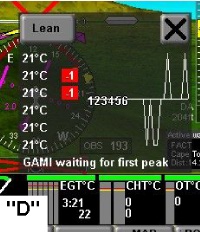IEFIS-EXPLORER, MGL IEFIS EXPLORER
Part #: IEFIS-EXPLORERIEFISEXPLORER
$3,105.00
compareOverview
|
The Explorer EFIS introduces a custom developed touch pressure sensitive LCD screen aimed exclusively at the small aircraft application. With the ability to accurately measure contact force in all conditions, it becomes possible to utilize the user interface advantages of a touch screen even in turbulent flight. Unlike conventional touch screen technology, MGL’s “tap screen” can be used with gloves, is completely unaffected by sunlight and even uses a polarized anti reflective and anti glare film. The tap screen uses only high quality optical glass in its construction and thus has no negative effects on the image quality, even in difficult light conditions. The tap screen is further qualified for zero pressure conditions such as experienced in space and is not affected by sudden, large pressure changes. Recognizing that some operations can never be fully replaced by a touch screen, the Explorer adds no less than 5 “clickable” rotary controls which assume functions depending on current need plus adds conventional, tactile buttons for quick access to often used functions regardless of what appears on the screen. Quick, logical interactive user interface. Combine what is good with every method. We have tapped on the COM 1 radio See Image “B” to bring up a larger version. Depending on the type of radio connected we can interact with the radio at various levels. Just flipping frequencies however requires only a tap on the displayed frequencies on the small COM 1 display (with animation so it is easy to see what is happening).
Central to all screens is the ICON reveal. Tap and several additional icons become visible for a set time. For example: See Image “C”
Nearly everything on the screen is interactive: Tap on the altimeter to set your local pressure. Tap on the Engine EGT display to get your leaning display: See Image “D”
Flight planning.
The iEFIS system is connected. A vast array of equipment from MGL and third parties can be connected. Being a true distributed, modular system you can connect up to 8 iEFIS panels of any size and even use a wireless node to connect to any Wifi compatible tablet or PC. Our famous “simulator”, a Windows based screen designer and simulator is no longer a simulator – it is the real thing. Support for connected devices is extensive. See Image “H” as an example of a VPX control panel from Vertical Power – of course simply tap of a breaker to switch it on/off or reset a fault.
One of the many advantages of the iBOX concept is lower cost for multipanel applications as the panel cost reduces dramatically, easier installation as the iBOX can be located where it provides convenient access. The panels require only power supply and a a single coax cable connection – thus it is rare that you will ever need to access the back of your panel. The iEFIS path… |
| Weight | 1 lbs |
|---|---|
| Brands |
Compatable Equipment
- SP-7 “CAN” AHRS (up to 4 can be connected for redundancy, however each iEFIS is also able to display a horizon based on accurate GPS measurements).
- SP-6 “CAN” Compass (up to two compass systems can be connected).
- RDAC XF and RDAC XF MAP – MGL’s new engine monitor. Up to 4 of these can be
- connected which means you can monitor up to 4 engines (including turbines).
- MGL Servo – The CAN based servo is compatible, up to three can be connected at this stage (Bank, Pitch and Yaw).
- MGL V6 and MGL V10 VHF COM radios. These are fully compatibe. Up to two can be
- connected and controlled from any iEFIS panel.
- MGL/Garrecht mode-s transponder. This remote mount transponder can be fully controlled by the iEFIS panel.
- MGL Navigation radio. Dual VOR, ILS, glide slope and marker receiver (Currently in development).
- MGL Flap/Trim motor controller. This CAN based interface can directly drive a DC motor for flap and trim control.















There are no reviews yet.